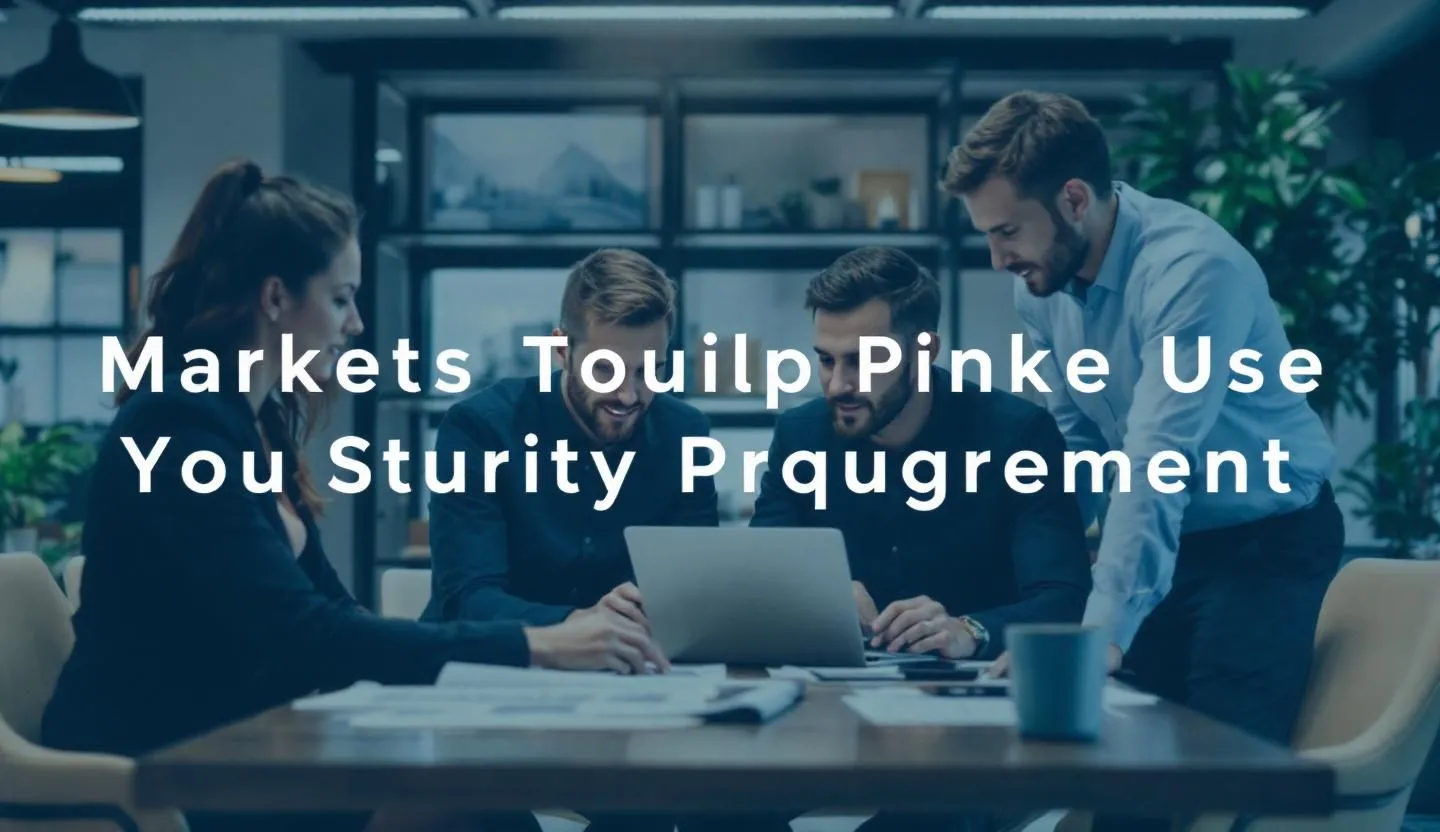Let’s not sugarcoat this: The pressure on enterprise marketing teams in investment banking is relentless. You’re expected to launch campaigns at the speed of a fintech startup, maintain unwavering brand consistency across global teams, and satisfy legal and compliance at every turn. Meanwhile, every client touchpoint,from a partner’s LinkedIn banner to a pitchbook in São Paulo,must radiate trust and credibility. It’s no longer just about looking polished; it’s about being the gold standard for reliability in a world that’s increasingly skeptical.
I’ve been in your shoes, balancing the needs of brand, legal, and operations while trying to keep creative teams inspired and nimble. And if you’re reading this, you know that the old way,endless email threads, ad hoc design tweaks, and manual compliance checks,just doesn’t cut it anymore. The stakes are too high. The competition is too fierce. And the clients are too discerning.
So, what’s really changing, and how can investment banking branding strategies not only keep up but actually set you apart in 2025? Let’s dig into what’s shifting, why it matters, and how you can be the leader who makes brand trust a growth lever,not a bottleneck.
Why trust is the linchpin for investment banking branding
Trust isn’t just a buzzword,it’s the currency that underpins every deal, relationship, and brand perception in investment banking. Your clients are making seven, eight, or nine-figure decisions based on your advice. The smallest whiff of inconsistency or non-compliance can erode years of reputation-building.
But trust is a moving target. In 2025, the challenge isn’t just to look trustworthy,it’s to operationalize trust at scale. That means every visual, every document, and every digital touchpoint must signal professionalism, reliability, and care. When a client sees your brand on a pitch deck or a real estate brochure, they should feel the same confidence as when they shake your hand in a glass-walled office.
What’s changing is the volume and velocity of brand touchpoints. The new reality is omnichannel: Your brand lives in webinars, in-person events, digital ads, secure portals, and even compliance documents on a wall. As a result, the margin for error is razor-thin. A single out-of-date asset, a misused logo, or a tone-deaf campaign can undermine the trust you’ve worked so hard to build.
How the landscape is shifting for investment banking brands
Digital acceleration has changed the game. The pandemic forced even the most traditional investment banks to embrace virtual dealmaking, remote collaboration, and cloud-based content management. Now, in 2025, those adaptations aren’t just sticking,they’re evolving.
Clients expect digital-first experiences: They want seamless, consistent interactions whether they’re meeting your team in person, on Zoom, or via a secure portal. At the same time, regulatory scrutiny has intensified. Compliance officers and legal teams are embedded in the marketing workflow, making speed-to-market more complex but non-negotiable.
Meanwhile, the war for talent and clients is global. Boutique firms and fintech disruptors are nipping at the heels of legacy players, using nimble, design-led brands to punch above their weight. I’ve seen seasoned bankers lose deals simply because their brand felt outdated compared to a challenger’s fresh, cohesive presence.
What’s at stake isn’t just visual polish,it’s the ability to inspire confidence, win competitive pitches, and close deals faster. The winners will be those who master the tension between creative agility and brand control, scaling personalized content without sacrificing trust.
Building a brand that clients trust, compliance loves, and teams actually use
This is the real-world challenge: How do you create an investment banking branding strategy that’s ironclad on compliance, inspiring for your teams, and deeply trusted by clients,without grinding your speed to a halt?
Operationalizing trust across every brand touchpoint
The first step is shifting from “brand as guidelines” to “brand as operations.” Your guidelines shouldn’t live in a PDF graveyard,they need to be embedded in the workflows and tools your teams use every day.
For example, a global real estate investment bank I worked with centralized their brand assets, templates, and approval workflows on a single secure platform. The result? Whether a banker in London needed a pitch deck or a team in Dubai was prepping a new real estate brochure, they pulled from the same source of truth. No more rogue logos or outdated disclaimers. Legal and compliance had real-time visibility, so nothing went out the door without review.
The impact was immediate:
- Brand consistency soared: even as the volume of localized content increased.
- Compliance headaches shrank: because everything was pre-approved and tracked.
- Creative teams spent less time on policing: and more on value-added work.
Enabling creative scale without brand chaos
The second pillar is empowering teams to move fast,without creating brand chaos. This means giving bankers, marketers, and partners access to self-serve, on-brand templates that are both flexible and locked down where it matters.
Take the example of a mid-market M&A firm that rolled out dynamic templates for pitchbooks, tombstones, and deal announcements. Marketers could customize client details, images, and even regional nuances,while core brand elements and disclosures remained untouchable. Not only did this cut production time in half, but it also ensured that every asset felt personal and compliant.
The real win? Teams stopped “going rogue” because the official tools were actually easier and faster to use than cobbling together their own.
Design consistency and compliance in a global enterprise
The word “compliance” rarely sparks joy for marketers. But in investment banking, it’s our reality,and honestly, it can be a strategic advantage if we get it right. The challenge is weaving compliance into the creative process so it enhances, not hinders, your brand’s agility.
Integrating brand guidelines with compliance workflows
I’ve seen too many enterprises treat compliance as a final hurdle, tacked onto the end of the creative process. The result? Delays, rewrites, and the dreaded “compliance ping-pong.” Instead, leading firms are embedding compliance rules directly into their brand systems and content tools.
For instance, imagine your brand guidelines and disclaimers are built right into every template and workflow. When your team is building a deal flyer or an investor report, they’re guided by prompts that ensure every disclosure, legal statement, and regulatory note is where it needs to be,before a single asset is exported. Compliance isn’t a bottleneck; it’s baked into the cake.
This approach isn’t just about risk mitigation. It’s about unlocking speed and confidence for marketers. The net effect? You reduce back-and-forth with legal, accelerate launches, and,most importantly,make compliance a brand value, not a brand tax.
Creating a culture of brand accountability
Brand consistency isn’t just a design problem. It’s a culture problem. When teams see brand and compliance as shared responsibilities,not just the job of “the brand police”,you get a multiplier effect.
One global investment bank I worked with hosted regular brand huddles,quick, cross-functional meetings where marketing, compliance, and even front-line bankers reviewed new materials together. These weren’t just box-ticking exercises. They created a shared language and trust, so everyone understood why brand guidelines mattered and how they protected client trust.
The result was more than just fewer errors. It was a sense of pride in the brand,a competitive edge that came through in every client interaction.
Speed-to-market meets enterprise-grade control
Let’s talk about the elephant in the room: Speed. Everyone wants it, but nobody wants to sacrifice control,especially in an industry where a single mistake can cost millions or spark regulatory headaches.
Streamlining content creation with secure, integrated platforms
The biggest bottleneck I see is fragmented tech stacks. Teams juggle asset libraries, email chains, cloud drives, and a patchwork of approval tools. Not only is this slow, but it’s also risky. Sensitive deal info or client data can slip through the cracks.
The most forward-thinking investment banks are consolidating their content operations onto secure, integrated platforms built for enterprise scale. These systems don’t just house brand assets,they automate version control, manage permissions, and provide audit trails for compliance.
The difference is night and day. Marketers can launch campaigns in days, not weeks. Compliance can review and approve with a few clicks, not a dozen emails. And IT and legal teams sleep better knowing everything is secure, logged, and centrally managed.
Balancing personalization with consistency
Clients expect tailored experiences. But as you scale across regions, service lines, and languages, the risk of brand drift grows exponentially.
The key is modular branding: Building content systems where core elements (logos, colors, voice, legal copy) are locked, but areas for personalization are clearly defined. For example, a global investment bank I worked with set up a template library where local teams could swap in region-specific imagery or language, while everything else remained consistent.
This approach let them move fast,localizing for Tokyo, Toronto, or Dubai in hours, not weeks,without ever veering off-brand. It’s personalization without the pain.
Standing out in a crowded, regulated market
With everyone racing to modernize, how do you actually differentiate your investment banking brand? It’s not just about being compliant or consistent. It’s about finding your unique voice and delivering memorable experiences at every touchpoint.
Finding your brand’s voice in a sea of sameness
Let’s be honest: Too many investment banks sound the same. Safe. Buttoned-up. Generic. But the most effective brands don’t just follow the rules,they find ways to inject personality and purpose, even in a conservative industry.
One boutique investment bank I admire leaned into its heritage of entrepreneurial deals and client-first service. Their branding wasn’t flashy, but every touchpoint,website, pitch deck, event signage,radiated confidence and warmth. They even trained bankers on storytelling, so client meetings felt less like lectures and more like conversations. The result? Higher client engagement, more referrals, and a reputation as the “human” alternative to bigger, colder firms.
You don’t have to reinvent the wheel. But you do have to ask: What makes our culture, our expertise, and our way of working truly different,and how does that show up in our branding, every day?
Bringing brand to life in every channel
Brand isn’t just a logo or a color palette. It’s how you show up,on LinkedIn, in a pitch meeting, or at a real estate conference. The challenge is creating a seamless experience, so every channel feels like an extension of your brand, not an afterthought.
A leading real estate investment bank I worked with built an “omnichannel brand playbook.” Every asset,digital or physical,followed the same principles, from printed brochures to interactive property tours. They even mapped the client journey, identifying key moments where brand experience could win or lose trust.
The upshot? Clients felt “seen” at every stage, and the bank’s brand recall soared. It wasn’t about being everywhere,it was about being consistent, intentional, and memorable everywhere that mattered.
Technology as the foundation for scalable, secure branding
It’s impossible to talk about investment banking branding in 2025 without talking about tech. The tools you choose,and how you implement them,will make or break your ability to scale brand trust, compliance, and creativity.
Choosing solutions built for enterprise needs
Enterprise marketers, brand leaders, and IT teams know the pain of “Frankenstacks”,a hodgepodge of point solutions that don’t play well together. The future belongs to integrated platforms that bring together brand management, creative production, compliance, and analytics in one secure, enterprise-grade environment.
The right platform should offer:
- Granular permissions: So partners, bankers, and agencies only see and edit what they should.
- Automated compliance checks: So legal can set rules once, and marketers get real-time feedback.
- Scalable template libraries: So teams across regions and service lines can move fast, without starting from scratch.
- Deep integration: With your CRM, DAM, and other enterprise systems, so data flows seamlessly and securely.
I’ve seen banks unlock massive efficiency gains and risk reductions by making the leap to unified solutions. It’s not just about tools,it’s about building a foundation for growth.
Partnering across functions for sustained success
Branding isn’t just marketing’s job. It’s a cross-functional effort that requires buy-in from IT, compliance, legal, and the front lines.
The most successful investment banking branding strategies I’ve seen are built on partnership. Brand and marketing teams work hand-in-hand with IT to ensure security and integration. Compliance and legal are involved early, not just at the end. Operations and partner managers help roll out new tools and workflows, making sure adoption is high and pain is low.
This cross-functional approach pays off in fewer silos, faster launches, and a stronger, more resilient brand. In a world where trust is everything, that’s a competitive advantage you can’t afford to ignore.
Measuring the impact of investment banking branding
All this effort is only worth it if it drives real results. The good news? Modern branding isn’t just a cost center,it’s a growth lever when measured and optimized correctly.
Gone are the days when brand was measured by “awareness” alone. In 2025, leading investment banks are tracking metrics that tie branding directly to business outcomes, including:
- Brand consistency scores: Automated audits of assets and campaigns, showing compliance with guidelines across regions and channels.
- Speed-to-market: Time from creative brief to launch, tracked by campaign type and business unit.
- Deal velocity: Measuring whether stronger, more consistent branding accelerates deal cycles or improves win rates.
- Client satisfaction: Direct feedback on brand experience, collected through surveys and NPS after key interactions.
- Compliance incidents: Tracking the frequency and severity of brand or legal missteps, aiming for continuous reduction.
Turning insights into action
The smartest teams don’t just collect data,they act on it. When a global investment bank noticed that deal velocity lagged in one region, a deep dive revealed that local teams were using outdated, off-brand materials. By rolling out updated templates and training, they not only improved consistency but also shaved weeks off deal timelines.
Branding is never “set it and forget it.” It’s a living system that needs regular tuning, feedback, and iteration,just like any high-performing enterprise operation.
Investment banking branding in 2025 isn’t just about aesthetics or compliance,it’s about building trust at scale, standing out in a crowded market, and driving measurable business results. For enterprise marketing leaders, the real challenge is balancing speed, scale, and control in an environment where the stakes are sky-high and the margin for error is razor-thin.
The shift is clear: The most successful firms are moving from static brand guidelines to dynamic, operationalized brand systems. They’re embedding compliance into creative workflows, empowering teams with secure, integrated platforms, and fostering a culture where brand is everyone’s job. By doing so, they unlock new levels of efficiency, agility, and,most importantly,trust with clients, regulators, and partners.
For those of us charged with stewarding enterprise brands, this is both a challenge and an opportunity. The tools and strategies exist to create branding that’s not just beautiful and compliant, but a true driver of growth. The difference comes down to leadership,choosing to break silos, partner across functions, and make brand trust a competitive weapon. In investment banking, where trust is everything, that’s how you build a brand that not only stands out, but truly sells.







